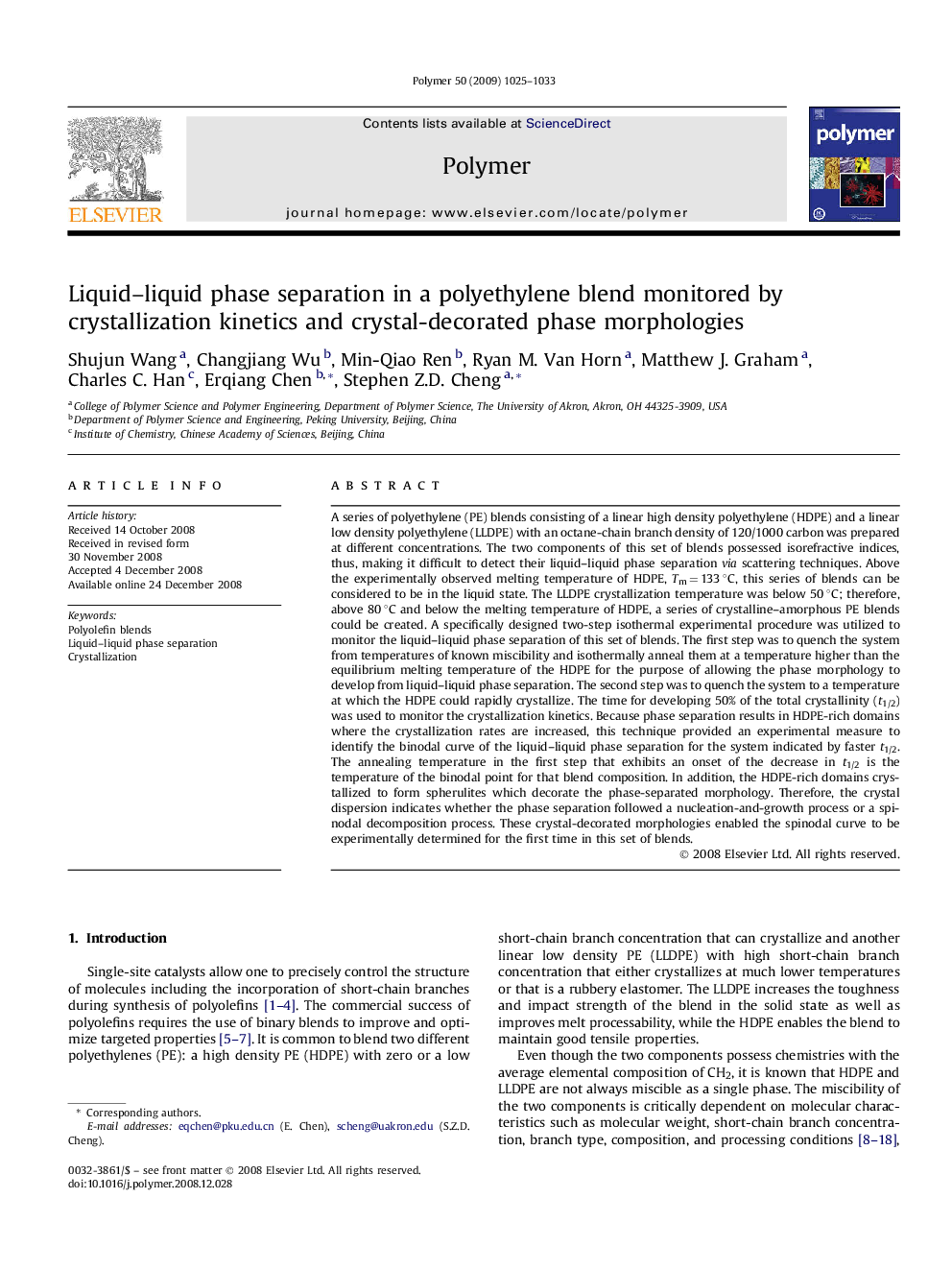| کد مقاله | کد نشریه | سال انتشار | مقاله انگلیسی | نسخه تمام متن |
|---|---|---|---|---|
| 5185223 | 1381071 | 2009 | 9 صفحه PDF | دانلود رایگان |

A series of polyethylene (PE) blends consisting of a linear high density polyethylene (HDPE) and a linear low density polyethylene (LLDPE) with an octane-chain branch density of 120/1000 carbon was prepared at different concentrations. The two components of this set of blends possessed isorefractive indices, thus, making it difficult to detect their liquid-liquid phase separation via scattering techniques. Above the experimentally observed melting temperature of HDPE, Tm = 133 °C, this series of blends can be considered to be in the liquid state. The LLDPE crystallization temperature was below 50 °C; therefore, above 80 °C and below the melting temperature of HDPE, a series of crystalline-amorphous PE blends could be created. A specifically designed two-step isothermal experimental procedure was utilized to monitor the liquid-liquid phase separation of this set of blends. The first step was to quench the system from temperatures of known miscibility and isothermally anneal them at a temperature higher than the equilibrium melting temperature of the HDPE for the purpose of allowing the phase morphology to develop from liquid-liquid phase separation. The second step was to quench the system to a temperature at which the HDPE could rapidly crystallize. The time for developing 50% of the total crystallinity (t1/2) was used to monitor the crystallization kinetics. Because phase separation results in HDPE-rich domains where the crystallization rates are increased, this technique provided an experimental measure to identify the binodal curve of the liquid-liquid phase separation for the system indicated by faster t1/2. The annealing temperature in the first step that exhibits an onset of the decrease in t1/2 is the temperature of the binodal point for that blend composition. In addition, the HDPE-rich domains crystallized to form spherulites which decorate the phase-separated morphology. Therefore, the crystal dispersion indicates whether the phase separation followed a nucleation-and-growth process or a spinodal decomposition process. These crystal-decorated morphologies enabled the spinodal curve to be experimentally determined for the first time in this set of blends.
Journal: Polymer - Volume 50, Issue 4, 9 February 2009, Pages 1025-1033